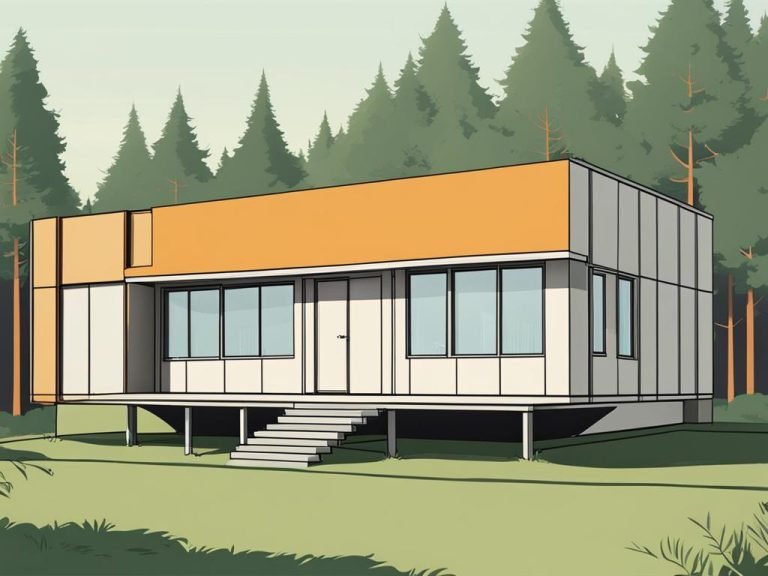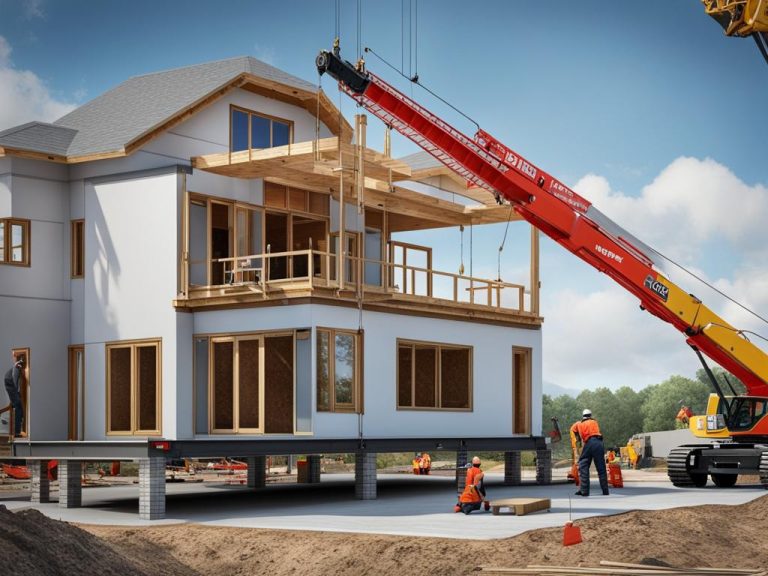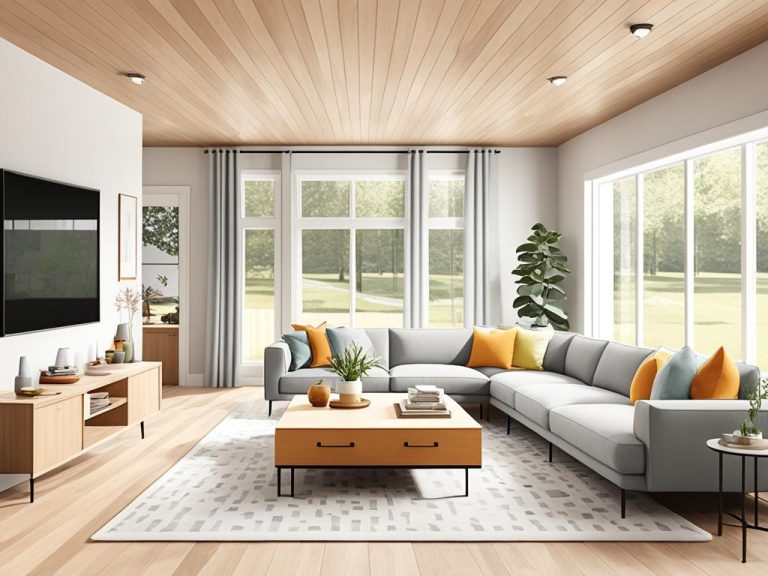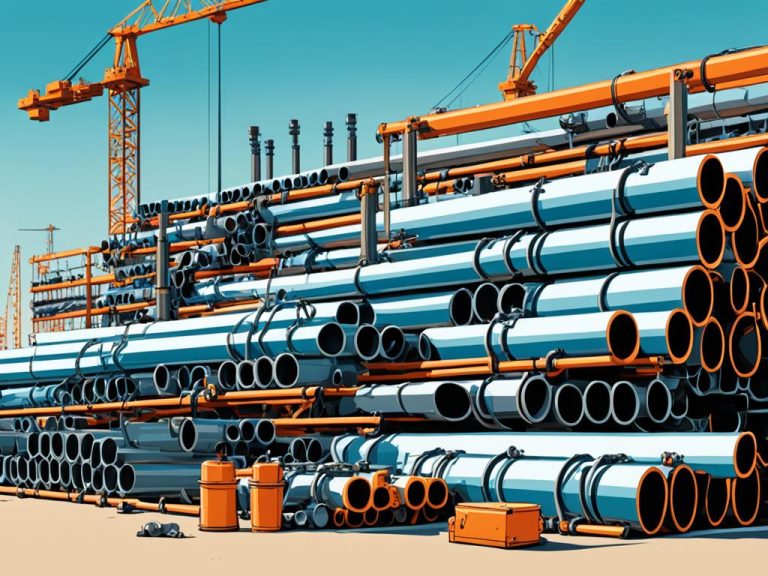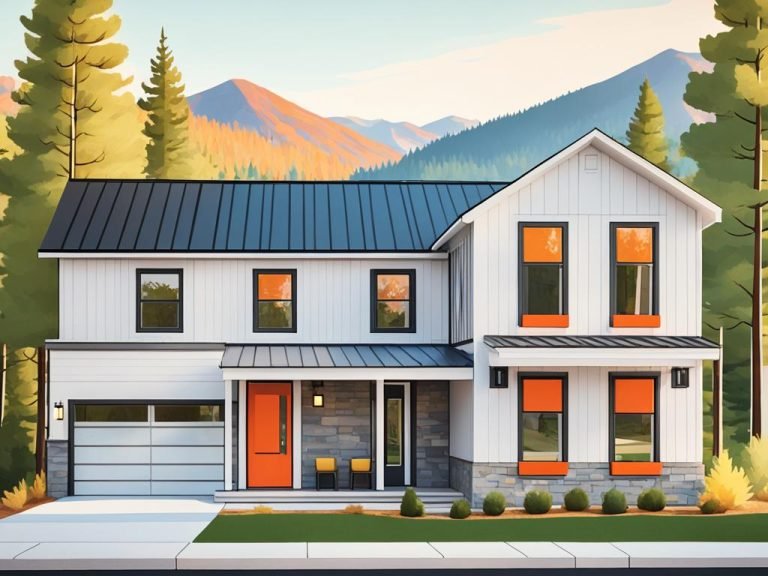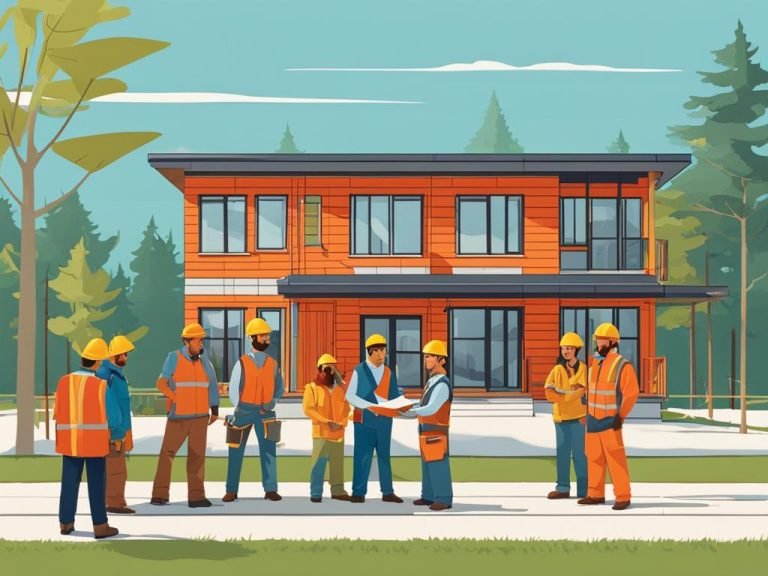Create Your Modular Home Design Online: A Comprehensive Guide
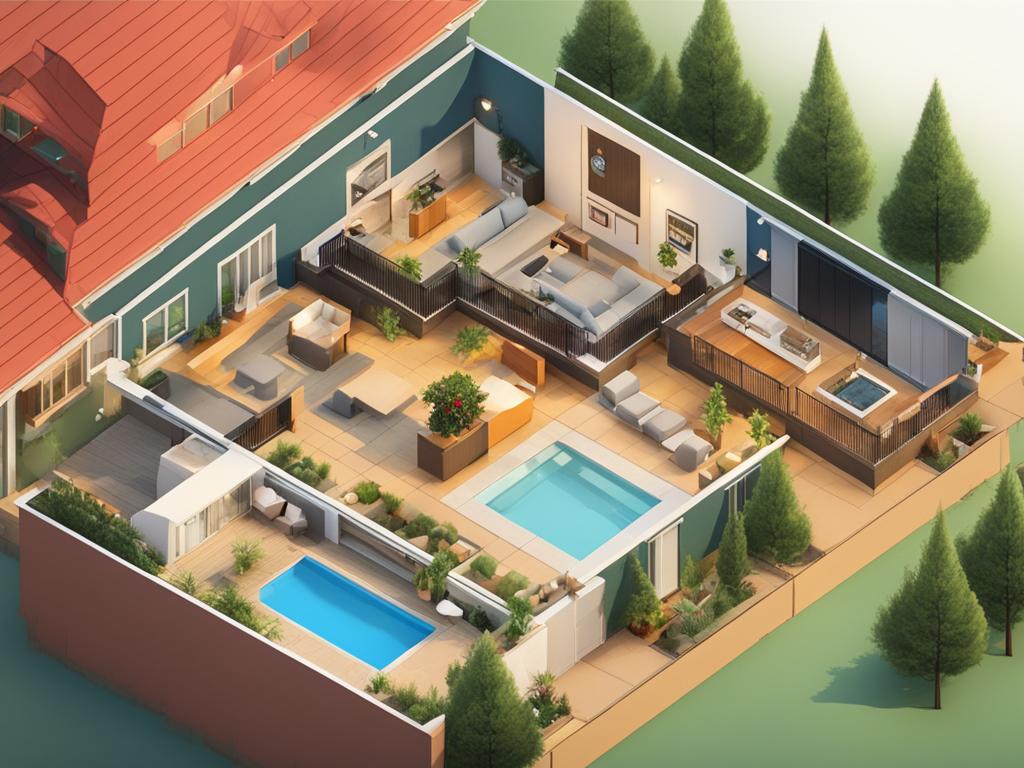
Modular homes have gained popularity as a cost-effective and customizable alternative to traditional site-built homes. With the ability to design your own modular home, you can create a living space that perfectly suits your style and needs. In this comprehensive guide, we will explore the process of modular home design and the benefits it offers.
Designing your own modular home allows you to customise every aspect of your living space. From the floor plan to the finishes, you have full control over the design. Whether you envision a cozy cottage or a modern marvel, the possibilities are endless. With the convenience of designing online, you can experiment with different layouts and styles until you find the perfect match.
- Modular homes offer a cost-effective and customizable alternative to traditional homes.
- Designing your own modular home allows for full control over the floor plan and finishes.
- Online design tools make it easy to experiment with different layouts and styles.
- Modular homes are built off-site in a controlled environment, resulting in higher quality and faster construction.
- Custom modular home design allows for energy-efficient features and sustainable materials.
What are Modular Homes?
Modular homes are prefabricated homes constructed off-site in factory settings. They are built in modules or sections and then transported to the building site for assembly. These homes follow the same building codes as traditional homes, ensuring they meet the necessary safety and quality standards. One of the key advantages of modular homes is their customization options. Homeowners can tailor the design and floor plan to meet their specific needs and preferences.
Modular homes come in various sizes and styles, ranging from small, single-story homes to larger, multi-story homes. They can be customised with different features, such as open floor plans, additional rooms, or specialized spaces like home offices or entertainment areas. The flexibility of modular home construction allows for creativity and adaptability when designing the perfect home.
When it comes to energy efficiency, modular homes excel. They can be designed with energy-saving features such as insulation, efficient heating and cooling systems, and solar panels. These elements can contribute to lower utility costs and create a more sustainable living environment.
The construction process of modular homes involves several stages. It begins with the design and planning phase, where homeowners work with architects or modular home builders to create a custom floor plan and choose desired features. Once the design is finalized, the modules are built in a controlled factory environment using high-quality materials and craftsmanship. After completion, the modules are transported to the building site, where they are assembled and finished according to the design specifications. Finally, the home undergoes inspection to ensure compliance with local building codes.
Benefits of Modular Homes
- Customization: Modular homes offer a range of design options and the ability to customize to suit individual preferences.
- Time and Cost Savings: The controlled factory construction process allows for faster build times and reduced material waste, resulting in cost savings.
- Quality Construction: Modular homes are built with precision and adhere to rigorous quality standards to ensure long-lasting durability.
- Energy Efficiency: Modular homes can be designed to maximize energy efficiency, saving homeowners on utility costs.
- Flexibility and Expansion: The modular construction method allows for easy future expansions or modifications to the home layout.
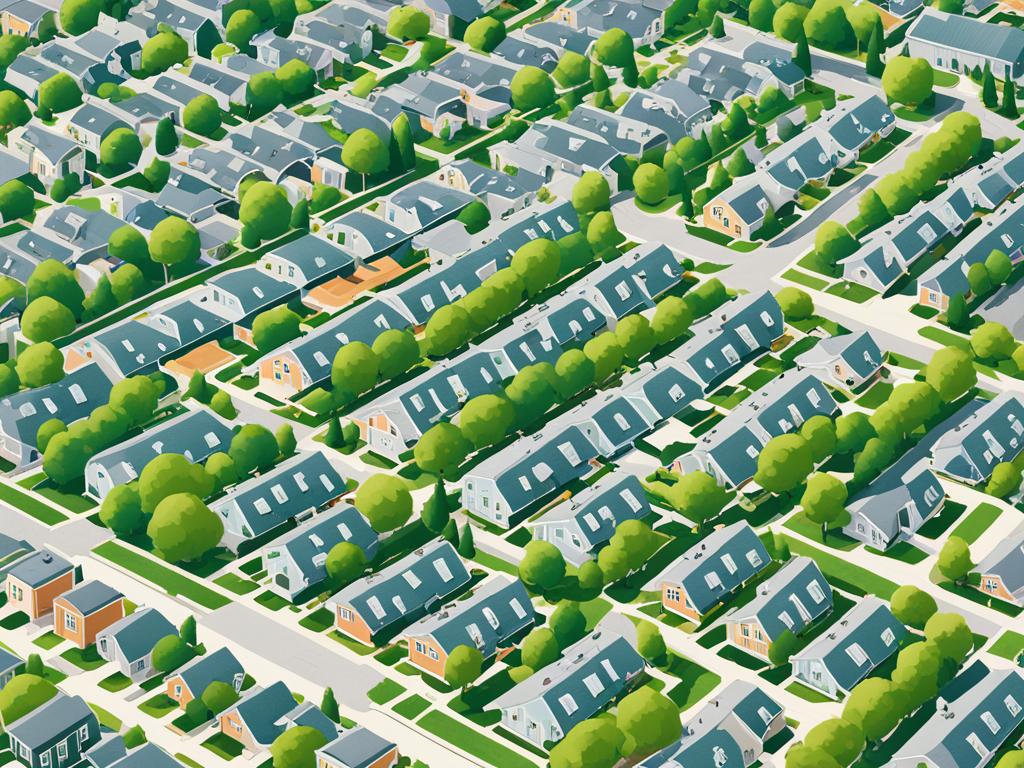
Modular Homes v/s Prefabricated Structures
Modular homes are a particular type of prefabricated structure. While other prefabricated structures can refer to a variety of building types, including modular homes, modular homes are specifically constructed in modules or sections that are transported and assembled on a permanent foundation. They are subject to more rigorous building codes and standards and are designed to be permanent residences.
Prefabricated structures may include panelized homes, mobile homes, and commercial buildings like offices or warehouses. Panelized homes are pre-built wall sections that are assembled on-site. Mobile homes, on the other hand, are transportable structures that are often used as temporary accommodations.
Panelized Homes
Panelized homes are constructed in factory settings, where walls and other components are built and transported to the building site for assembly. This construction method allows for faster and more efficient building compared to traditional site-built homes. Panelized homes offer flexibility in design and can be customized to meet homeowners’ preferences.
Mobile Homes
Mobile homes, also known as manufactured homes, are transportable structures designed for temporary or semi-permanent living. They are built in factories and then transported to the desired location. Mobile homes offer affordability and quick installation, making them a popular choice for individuals seeking temporary or affordable housing solutions.
Commercial Buildings
Prefabricated commercial buildings are designed for various purposes, including offices, warehouses, and retail spaces. They are constructed off-site and then transported and assembled on the intended location. Prefabricated commercial buildings offer faster construction times and cost savings compared to traditional construction methods.
Modular homes, on the other hand, offer the advantage of being able to customize and adhere to higher building standards. They are designed to be permanent residences and provide homeowners with the flexibility to create their dream homes while meeting stringent building codes. Modular homes are constructed using quality materials and techniques that ensure durability and longevity.
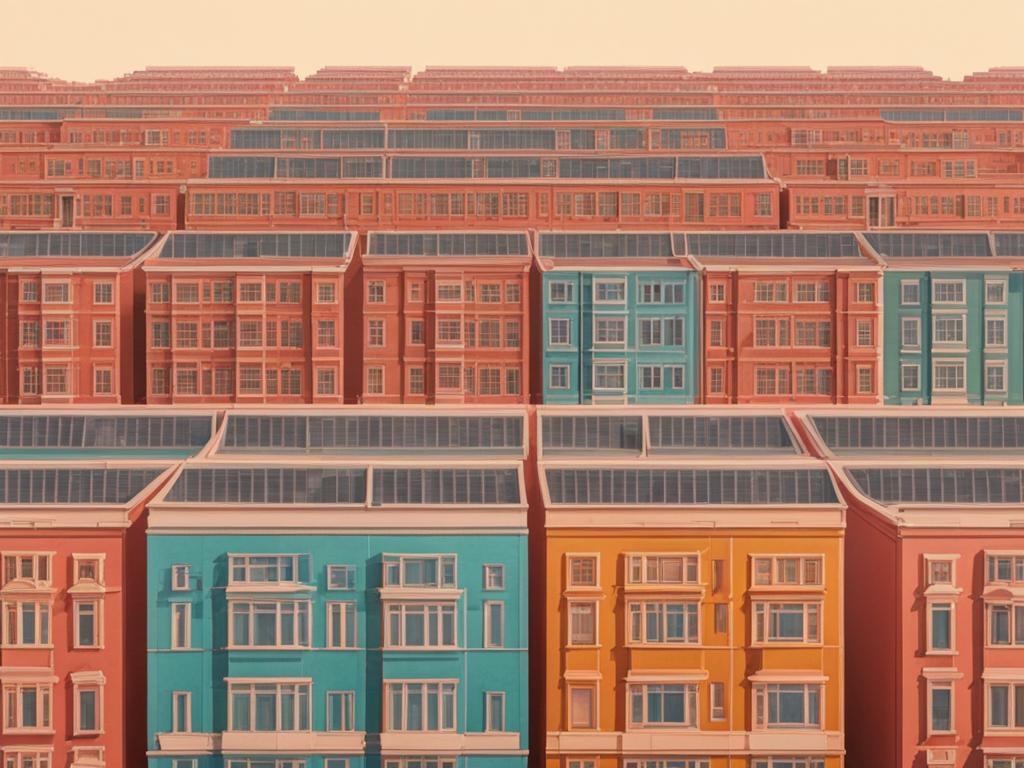
Modular homes not only offer the benefits of customization and high-quality construction but also provide a more sustainable housing option. With improved energy efficiency and reduced waste during the construction process, modular homes contribute to a greener and more eco-friendly environment.
Whether you are looking for a panelized home, a mobile home, or a commercial building, it is essential to understand the distinctions between these prefabricated structures and modular homes. Modular homes offer a superior level of customization and quality, making them an ideal choice for those seeking a permanent and personalized living space.
Construction Process of Modular Homes
The construction process of modular homes involves several steps to ensure a seamless and efficient build. From initial design and planning to final inspection, each stage is carefully executed to deliver a high-quality modular home that meets the homeowner’s specifications.
Design and Planning
Before construction begins, collaboration between the homeowner and the modular home builder is vital. Together, they work to create a customized design that suits the homeowner’s preferences and requirements. This stage allows for personalized touches and ensures that the modular home reflects the homeowner’s unique style.
Factory Construction
Once the design is finalized, the construction of the modular home modules begins in a controlled factory environment. Traditional building materials and techniques are used to ensure structural integrity and durability. Stringent quality control measures are in place throughout the manufacturing process to maintain high standards of workmanship.
Transportation and Assembly
Once the modules are completed, they are transported to the building site on flatbed trucks. This method of transportation allows for safe and efficient delivery of the modules. Upon arrival, the modules are assembled on a prepared foundation. The precise fit and alignment of the modules ensure a seamless integration, resulting in a sturdy and well-constructed modular home.
Interior and Exterior Finishing
With the modules in place, the interior and exterior finishing work begins. This includes everything from electrical and plumbing installations to the application of finishes and fixtures. The modular home builder pays close attention to detail during this stage, ensuring that every aspect of the home is completed to the homeowner’s satisfaction.
Inspection and Compliance
Before handing over the keys to the homeowner, a thorough inspection is conducted to ensure that the modular home meets all building codes and regulations. This step guarantees that the construction process has adhered to the required standards and that the modular home is safe and compliant.
The construction process of modular homes combines efficiency, quality craftsmanship, and effective collaboration between the homeowner and the modular home builder. By following these steps, modular home construction delivers a custom-designed home that is built to last.
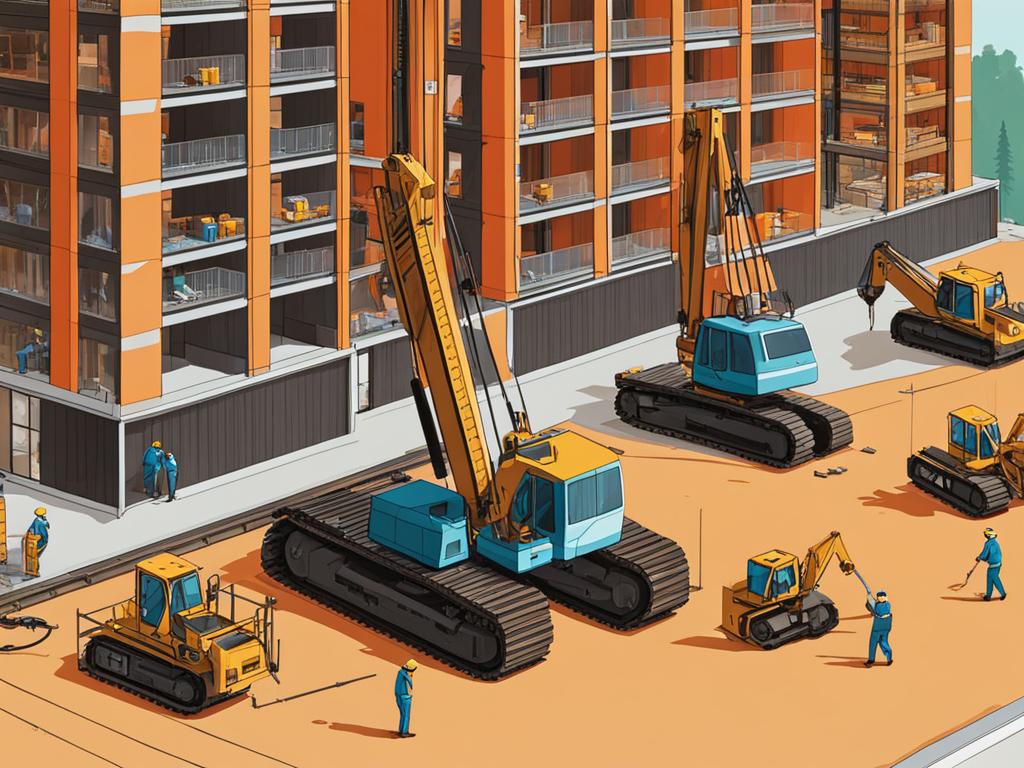
Benefits of Modular Architecture
Modular architecture offers numerous advantages over traditional site-built construction. With its modular design and construction process, it offers significant benefits in terms of speed of construction, cost-effectiveness, high quality, flexibility, and sustainability.
Speed of Construction
The controlled environment of modular construction in factory settings allows for faster construction compared to traditional methods. The modules are pre-fabricated off-site and transported to the building site for assembly. This streamlined process reduces construction time, resulting in quicker project completion and reduced construction delays.
Cost-Effectiveness
Modular architecture is known for its cost-effectiveness. The factory construction process and bulk purchasing of materials result in reduced costs. Additionally, the controlled environment of factory settings minimizes the risk of weather-related delays and material wastage, further reducing expenses. Homeowners can enjoy cost savings while still achieving their desired design and quality.
High Quality
Modular homes are built to high standards of quality. The construction process includes stringent quality control measures to ensure workmanship excellence. Skilled professionals and advanced construction techniques are employed to create durable and well-constructed modules. The use of quality building materials and adherence to building codes ensure that modular homes meet or exceed the standards set for traditional site-built homes.
Flexibility
One of the significant advantages of modular architecture is its flexibility in design. Homeowners have the freedom to customize their modular homes according to their preferences and needs. From layout configurations to finishes and fixtures, modular homes offer endless possibilities for personalization. Whether it’s adding additional rooms, creating open floor plans, or incorporating unique features, modular architecture allows homeowners to create a living space that suits their lifestyle.
Sustainability
Modular architecture is inherently sustainable. The construction process utilizes eco-friendly materials and reduces waste compared to traditional construction methods. The controlled factory setting allows for efficient use of resources, resulting in fewer off-cuts and minimization of material wastage. Additionally, modular homes can be designed to be energy-efficient, incorporating features like insulation, energy-efficient appliances, and renewable energy systems. This commitment to sustainability makes modular architecture an environmentally friendly choice.
The benefits of modular architecture, including speed of construction, cost-effectiveness, high quality, flexibility, and sustainability, make it an attractive option for homeowners looking for a modern and efficient way to build their dream homes.
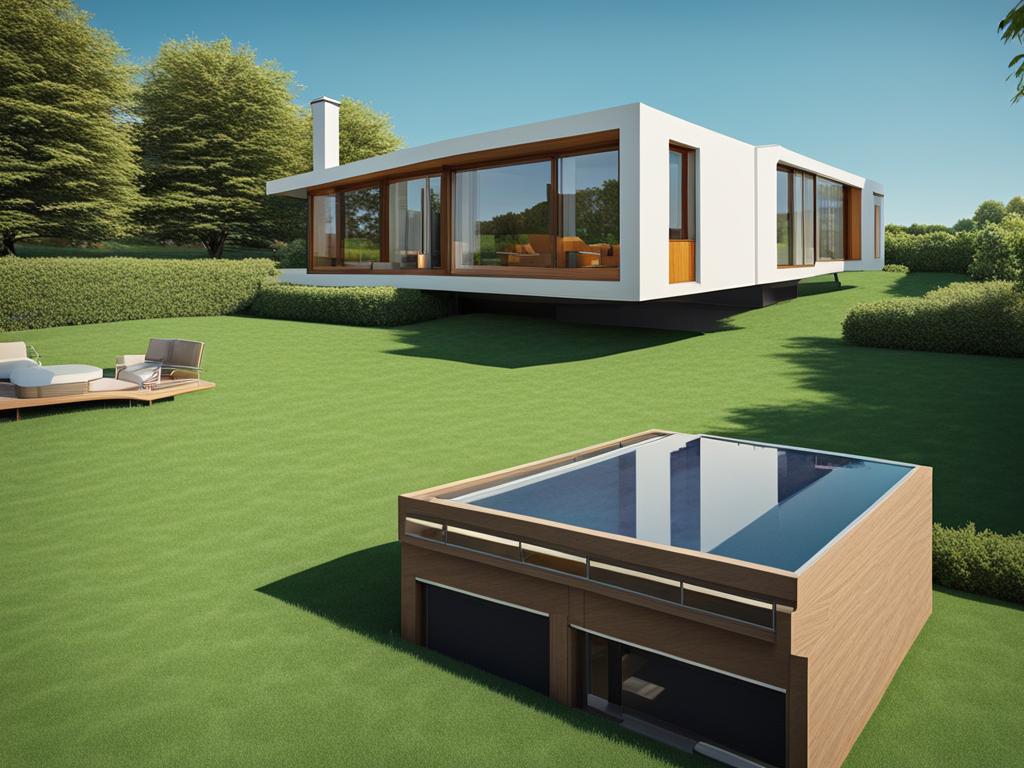
Building Examples
In the modular architecture industry, companies like Mini Living, Tenfold Engineering, Blu Homes, and Method Homes are leading the way with their innovative approaches to design and features. These companies offer a range of unique options that cater to the preferences of modular modern houses, while also promoting eco-friendliness and flexibility.
Mini Living specializes in creating modular living solutions that maximize space efficiency without compromising style. Their designs incorporate smart storage solutions and multipurpose furniture to create functional yet beautiful living spaces. With a focus on sustainability, Mini Living uses eco-friendly materials and incorporates energy-efficient features, allowing homeowners to live more sustainably without sacrificing comfort.
Tenfold Engineering takes a modular approach to construction, enabling rapid and efficient on-site assembly. Their modular homes are designed to adapt to different locations and can be easily expanded or reconfigured as needed. Tenfold Engineering’s commitment to sustainability is evident in their use of renewable materials and energy-efficient systems, making their homes both environmentally friendly and cost-effective.
Blu Homes is renowned for their modern and customizable modular homes. They offer a range of floor plans and design options to suit various lifestyles and preferences. Blu Homes’ emphasis on quality craftsmanship and attention to detail ensures that their homes are not only visually stunning but also built to last. With their commitment to energy efficiency and sustainable building practices, Blu Homes creates homes that are both stylish and eco-friendly.
Method Homes specializes in creating modular homes that combine style, sustainability, and affordability. Their homes feature clean lines, contemporary designs, and open floor plans that maximize natural light and create a seamless indoor-outdoor connection. Method Homes’ commitment to sustainability extends beyond their design approach; they also incorporate eco-friendly materials and energy-efficient systems to reduce the environmental impact of their homes.
These companies demonstrate the potential of modular construction to create stylish and efficient living spaces that are sustainable and meet the needs of today’s lifestyles. With their innovative designs, commitment to sustainability, and focus on customization, Mini Living, Tenfold Engineering, Blu Homes, and Method Homes are paving the way for the future of modular modern houses.

Conclusion
Designing your own modular home offers the opportunity to create a customised living space that suits your needs and preferences. These cost-effective and flexible homes are becoming an increasingly popular choice for homeowners in the UK. With modular home design inspiration abound, you can unleash your creativity and build a home that reflects your unique style.
Modular homes offer numerous benefits, including quicker construction times, reduced costs, and high-quality craftsmanship. You can take advantage of energy-efficient designs and sustainable materials, ensuring a home that is not only stylish but also eco-friendly.
Whether you choose to collaborate with experienced modular home design companies or explore the option of designing your own modular home online, the possibilities are endless. Embrace the freedom to customise your living space and unlock the potential to create a beautifully designed, efficient, and sustainable modular home in the UK.
FAQ
What is a modular home?
A modular home is a prefabricated home constructed off-site in factory settings. It is built in modules or sections and then transported to the building site for assembly.
How does a modular home differ from other prefabricated structures?
Modular homes are specifically constructed in modules or sections that are transported and assembled on a permanent foundation. They adhere to more rigorous building codes and standards and are designed to be permanent residences.
What is the construction process of a modular home?
The construction process of a modular home involves design and planning, factory construction, transportation, assembly, finishing, and inspection.
What are the benefits of modular architecture?
Modular architecture offers faster construction, cost savings, higher quality standards, energy efficiency, design flexibility, and sustainability.
Can I customize my modular home?
Yes, modular homes can be customized to meet homeowners’ needs and preferences.
Are there any leading companies in the modular architecture industry?
Yes, companies like Mini Living, Tenfold Engineering, Blu Homes, and Method Homes are leading the way with innovative approaches to design and features.
How can I design my own modular home?
You can either work with a company or design your own modular home online to create a customized living space that suits your needs and preferences.

